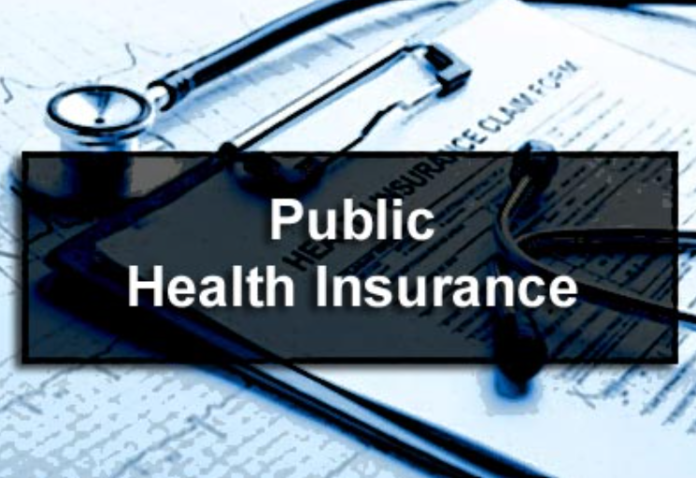Looking at Public Health Insurance – Imagine you wake up with a nagging cough that just won’t quit. You know you should see a doctor, but a voice in your head whispers, “Can I afford it?” This is the harsh reality many individuals face without public health insurance.
But fear not! Public health insurance acts as a superhero, swooping in to catch you before the financial burden of healthcare sends you plummeting. Let’s delve into this world of public health insurance, exploring its types, benefits, and how it can empower you to prioritize your well-being.
Public Health Insurance: Your Guardian Angel
Public health insurance refers to government-sponsored programs that provide health coverage to eligible citizens. These programs aim to ensure everyone has access to essential medical services, regardless of income or health status.
The two main players in the United States public health insurance arena are:
- Medicare: This program is a lifesaver for seniors aged 65 and above, along with people with certain disabilities. It offers a range of benefits, including hospitalization, doctor visits, and preventive care.
- Medicaid: This program is a champion for low-income individuals, families, and people with disabilities. It provides comprehensive health coverage, ensuring crucial medical services are within reach.
Beyond Medicare and Medicaid:
The public health insurance landscape extends beyond these two giants. Some states offer additional programs catered to specific needs, such as CHIP (Children’s Health Insurance Program) for low-income children and pregnant women. There are also programs for veterans and specific government employees.
The Advantages of Public Health Insurance
We established that public health insurance acts as a financial superhero, but let’s dissect its powers further and explore the multifaceted benefits it offers:
-
Risk Pooling and Cost Sharing:
Public health insurance operates on the principle of risk pooling. Imagine a large pot of money contributed by many individuals. When someone needs medical care, the pot covers the expenses. This spreads the financial risk across the entire pool, making healthcare more affordable for everyone.
-
Bargaining Power and Cost Efficiency:
Public health insurance programs have immense bargaining power due to the large number of people they cover. This allows them to negotiate lower rates with hospitals, doctors, and pharmaceutical companies. The savings translate to lower premiums and co-pays for beneficiaries. Additionally, public programs often have streamlined administrative processes, further reducing overall healthcare costs.
-
Emphasis on Preventive Care:
Public health insurance plans often prioritize preventive care. This includes regular check-ups, screenings for diseases like cancer and diabetes, and vaccinations. Early detection and intervention are key to preventing minor issues from becoming major health problems. This proactive approach not only improves individual health outcomes but also reduces long-term healthcare costs for the entire system.
-
Improved Public Health Outcomes:
By ensuring access to preventive care and treatment for everyone, public health insurance programs contribute to a healthier overall population. This translates to fewer people with chronic illnesses, reduced hospitalizations, and a more productive workforce. A healthier population also translates to lower societal costs associated with healthcare.
-
Reduced Financial Burden for Families:
Medical bills are a leading cause of financial hardship. Public health insurance shields families from this burden, allowing them to focus on other essential needs like housing, education, and food. This financial stability contributes to overall well-being and a better quality of life.
-
Increased Access to Mental Health Services:
Public health insurance programs are increasingly recognizing the importance of mental health. Many plans now cover therapy sessions, medication for mental health conditions, and substance abuse treatment. This promotes mental well-being and helps individuals lead more fulfilling lives.
-
Promoting Social Equity:
Public health insurance plays a crucial role in reducing healthcare disparities. By providing coverage to low-income individuals and minorities, it removes a significant barrier to accessing essential healthcare services. This helps create a more equitable healthcare system where everyone has a fair shot at good health.
-
Fostering Innovation:
Public health insurance programs can act as a catalyst for innovation in the healthcare industry. The pressure to control costs can encourage providers to develop new, more efficient treatment methods and technologies. Additionally, public programs often invest in research to improve healthcare delivery and outcomes.
Public health insurance goes beyond simply covering medical bills. It’s an investment in the health and well-being of individuals, families, and society as a whole. By promoting preventive care, cost-effectiveness, and social equity, public health insurance paves the way for a healthier future for everyone.
Public Health Insurance: Not Without Its Quirks
We’ve sang the praises of public health insurance, but let’s be honest, no system is perfect. Here’s a deeper dive into the potential downsides you should be aware of:
-
Eligibility Hurdles:
- Income Limits: Many public health insurance programs, particularly Medicaid, have income limitations. This means individuals exceeding the threshold might not qualify for coverage.
- Citizenship Requirements: Some programs have citizenship or immigration status requirements, potentially leaving out undocumented immigrants who may need healthcare access.
-
Bureaucracy and Wait Times:
- Complex Enrollment Process: Navigating the application process for public health insurance programs can be overwhelming, especially for those unfamiliar with the system.
- Limited Network Choices: Public health insurance plans might have a narrower network of doctors and hospitals compared to private plans. This can limit your choice of providers and potentially lead to longer wait times for appointments or specialists.
- Prior Authorization: Certain procedures or medications might require prior authorization from the insurance program, leading to delays in receiving the necessary care.
-
Funding Challenges:
- Political and Economic Fluctuations: Public health insurance programs rely on government funding, which can be vulnerable to political and economic fluctuations. This can lead to changes in eligibility requirements, benefits offered, or even program cuts.
- Long-Term Sustainability Concerns: The rising cost of healthcare puts a strain on public health insurance programs. This raises concerns about the long-term sustainability of these programs and the potential for future program changes.
-
Potential for Misuse:
- Overutilization: While preventive care is emphasized, there’s always the risk of some individuals overutilizing the system, leading to higher costs for everyone.
- Fraud and Abuse: Like any large system, public health insurance programs can be susceptible to fraud and abuse. This can undermine the program’s financial stability and ultimately impact beneficiaries.
Mitigating the Quirks:
While these downsides exist, knowledge is power. Here are some tips to navigate the system:
- Research: Familiarize yourself with the specific eligibility criteria and enrollment process for the public health insurance program you’re interested in.
- Seek Help: Many government agencies and non-profit organizations offer free assistance with applying for public health insurance.
- Advocate: If you encounter challenges with the program, don’t hesitate to reach out for help and advocate for your needs.
Public health insurance, despite its quirks, remains a vital safety net for millions. The advantages far outweigh the challenges. By being aware of the potential downsides and taking steps to mitigate them, you can maximize the benefits of public health insurance and prioritize your overall well-being.
Frequently Asked Questions (FAQs)
Here are some of the frequent questions people ask about public health insurance you may want to consider:
Q: Is Public Health Insurance Right for You?
A: This depends on your individual circumstances. If you’re a senior, disabled, or have a low income, public health insurance could be a game-changer. Even if you have private insurance, exploring public options as a supplement can provide additional benefits or financial relief.
Q: Are there any costs associated with public health insurance?
A: Yes, there might be. It depends on the program and your specific situation. Here’s what to consider:
- Premiums: Some public health insurance plans have monthly premiums, though these are often lower than private insurance premiums.
- Deductibles: You might have to pay a deductible (a set amount) before the insurance plan starts covering your healthcare costs.
- Co-pays: You might have co-pays for doctor visits, prescriptions, or other services.
Q: Will I have a choice of doctors with public health insurance?
A: Public health insurance plans typically have a network of doctors and hospitals that participate in the program. You can choose a provider within the network.
Q: I’m not a senior or disabled. Can I still get public health insurance?
A: Absolutely! While Medicare targets seniors and Medicaid focuses on low-income individuals and families, there are additional programs depending on your situation. Some states offer programs for children (CHIP), pregnant women, and specific government employees.
Q: What if I don’t qualify for public health insurance?
A: Don’t despair! You still have options:
- Employer-sponsored insurance: If you’re employed, check if your employer offers health insurance.
- Private insurance: The individual health insurance marketplace offers plans at varying costs depending on your age, health status, and location. You may also qualify for subsidies to help make these plans more affordable.
Q: Can I switch between public and private health insurance?
A: Yes, with some limitations. You can generally enroll in a public program during designated open enrollment periods, even if you have private insurance. However, switching from public to private might be more challenging depending on your situation.
Q: How do I enroll in public health insurance?
A: The enrollment process varies by program. There are some resources like Medicare, Medicaid, and Benefits.gov.
Public health insurance is a valuable resource. By understanding your options and potential challenges, you can make informed decisions about your healthcare coverage and prioritize your health!
Conclusion
Public health insurance is a cornerstone of a healthy society. It empowers individuals to prioritize their well-being without worrying about breaking the bank. By understanding the different programs and their advantages, you can make informed decisions about your healthcare coverage. Remember, prioritizing your health is an investment, and public health insurance is there to support you on that journey.












